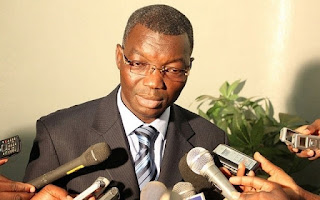"The young man was quietly passing his way. He was not among the protesters. Besides, the demonstrations were over. His only fault is wearing a red T-shirt. The militia, aboard a Toyota 4X4 pickup truck, threw themselves on him. They had machetes, long sticks, studded clubs and pistols. They beat her violently and left for dead. We even thought he was dead, since he could not move, "says a listener on a radio station, witnessing this horrible scene. This is what the Minister of Security and Civil Protection, Yark Damehame calls "self-defense groups." They would have formed after the march of October 5, because the opposition activists would have beaten their wives and children, according to the minister.
With regard to the event of 5 October that evokes Yark Damehame, it is no longer to demonstrate that it is young people recruited and prepared by the regime to sow disorder in this march. The demonstrations of the opposition becoming a puzzle, the power, had begun to look for motives to ban them. Before the demonstrations on October 5, there were reports that young people were preparing to infiltrate them and break the dead from the opposition and its activists. Obtaining what they wanted, the Minister of Territorial Administration, Decentralization and Local Authorities, Payadowa Boukpessi and his colleague of the Security and Civil Protection, Yark Damehame hastened to prohibit the demonstrations of the opposition during the week, in violation of the law of 16 May 2011 on peaceful public demonstrations. It was in the wake that the regime unleashed the militia, backed by the police and the military, in the holsters of opposition demonstrators and peaceful populations.
Questioned about the abuses of these unidentified men in plainclothes, armed with studded clubs, machetes and pistols, who were returning home, beat people and made serious injuries, Yark Damehame, visibly embarrassed, had no problem. other answers than to suggest that it is individuals whose women were beaten on October 5, which are organized in self-defense groups in neighborhoods. A very serious statement from a minister who visibly encourages and promotes anarchy in the country. Curiously, these self-defense groups with which the Yark Damehame regime belongs would have nothing to do with, are well equipped. Neighborhood self-defense groups that have brand new 4X4 pickups (and all neighborhoods would have agreed to offer the same brand of vehicle), guns and other guns, new machetes and more cold steel. Where do all these resources come from? Self-defense groups that go to other neighborhoods, go into houses, beat up, kill and loot. By the way, self-defense groups or attack groups in the pay of whom all Togolese know? What message do the Togolese authorities want to give to the people by encouraging such crimes? By the way, self-defense groups or attack groups in the pay of whom all Togolese know? What message do the Togolese authorities want to give to the people by encouraging such crimes? By the way, self-defense groups or attack groups in the pay of whom all Togolese know? What message do the Togolese authorities want to give to the people by encouraging such crimes?
There is every reason to believe today that anarchy has become the most widely shared thing at the top of the state. the former Director of the Gendarmerie Nationale, by these declarations, perhaps wants to say to the Togolese that we should no longer resort to justice. And if all Togolese were now organized into self-defense groups, each in his neighborhood, Togo would be a livable country?
YarkDamehame, in front of the press, the evening of October 18, was embarrassed. It seems that the situation has eluded him for a few days. He even said he was not aware of the exit of these unidentified individuals who spread terror in the neighborhoods. Apparently, these people would be under the orders of other apparatchiks of the regime and operate under the protection of "securocrats" who report to the Minister of Defense who is none other than Faure Gnassingbe himself. These are the people who fire live ammunition at the demonstrators, causing death and serious injury. The objective is to discourage mobilization by creating psychosis among the population, since Faure Gnassingbé continues to tell all those who are trying to mediate for a way out of the crisis, that nothing serious happens in the country. Togo, and that it is a handful of over-excited individuals who are wreaking havoc in the country. And yet, it is all the people on his back and the crisis is real.
Today, the determination of the Togolese people is unparalleled. Are we going to continue these abuses on people who are always ready to take to the streets, instead of acceding to their demands? It is sad, however, that it is a minister of the Republic who is transformed into a torchbearer of the uncertain future of Togo, by endorsing these unidentified plainclothes individuals, but heavily armed. It is understandable then these go-to-war regime that ask the opposition to take weapons to come to power

Comments
Post a Comment